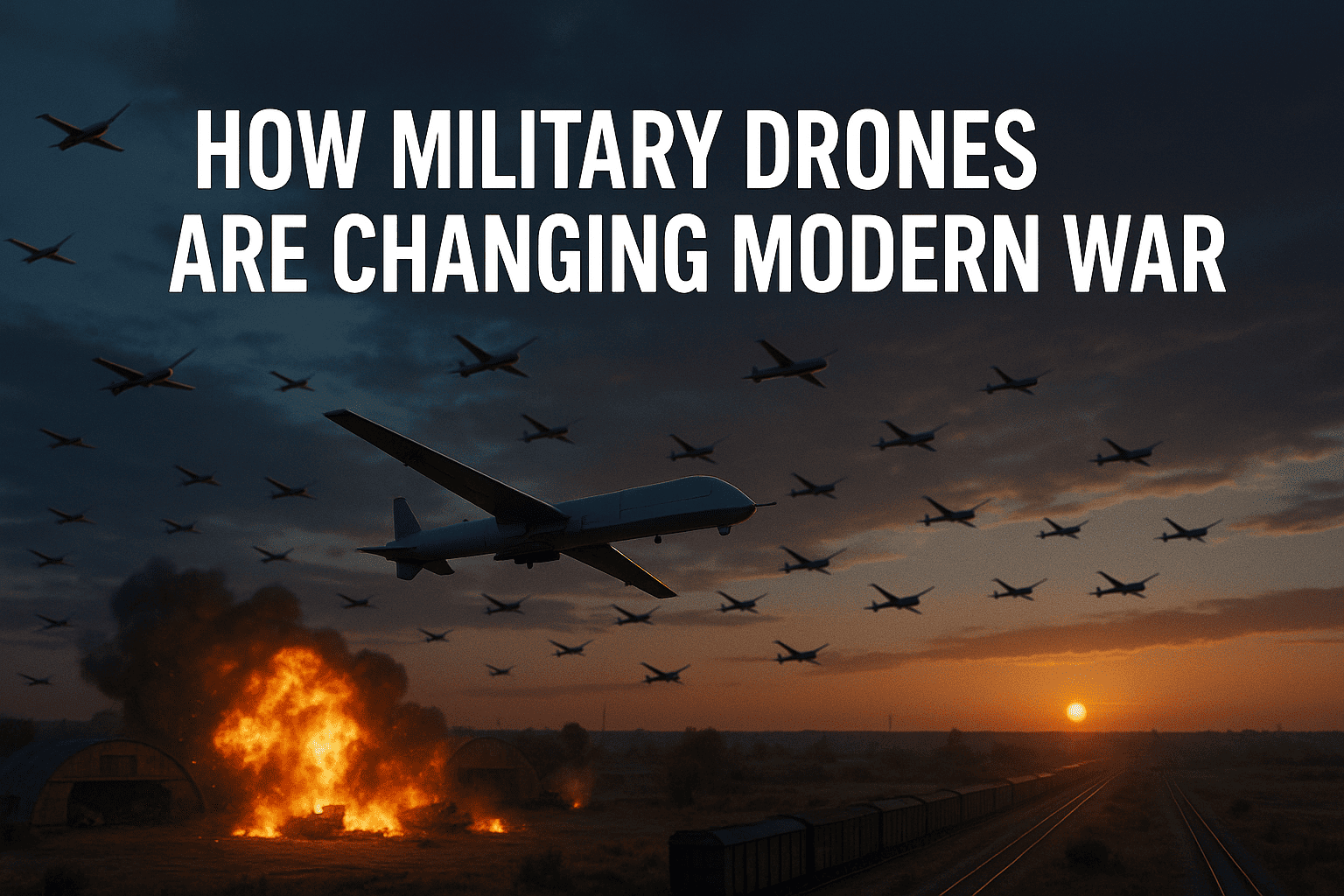War has changed. It’s no longer just soldiers, tanks, or fighter jets. Today, military drones—also known as UAVs (Unmanned Aerial Vehicles)—are playing a huge role on the battlefield. These flying machines are silent, precise, and deadly. They don’t need a pilot onboard. Instead, they’re controlled remotely or fly on autopilot. From the U.S. to Ukraine, drones are now shaping modern war like never before.
What Are Military Drones?
Military drones are aircraft without a human pilot. They come in all shapes and sizes—some are small and used for spying, while others are large and carry weapons. These drones can fly for hours, watch enemy movements, or launch missiles with high accuracy. The main goal is to reduce human risk while increasing precision and power.
How Drones Are Changing Modern War
Drones offer the greatest advantage for remote warfare. Armies no longer have to send in infantry to get results; a drone can do the exact same work from a distance, with shorter timeframes. That reduces the risk to human life and allows for quicker achieving of missions.
However, drones also give armies real time surveillance. This means commanders see on screen, in live time, exactly what is happening on the battlefield, where the fighting is, and what it is doing (compared to earlier deployments in which the commander had to gather intelligence and form plans, based on assessments knowing little to now what the enemy looked like or where they were at all). This is an overwhelming advantage for any army.
Drones are also economically friendly. Compared to military jets, they are cheaper to build and easier to fly. This means smaller countries can access advanced technological development, even at the height of war.
Drones can hit with surgical strike precision. The drone can find one specific target in a city, and only destroy that target with no collateral damage—if the conditions are right.
How Ukraine Uses Drones Against Russia
One of the most recent and dramatic examples of drone warfare is happening right now—in the war between Ukraine and Russia.
Ukraine has used drones in powerful and creative ways. Some are bought from countries like Turkey (such as the famous Bayraktar TB2), while others are cheap commercial drones modified for war.
These drones help Ukraine:
- Track Russian troop movements
- Destroy tanks and vehicles
- Hit fuel depots and military bases
- Even strike deep inside Russian territory
In one case, drones were used to attack military airfields hundreds of kilometers from the frontlines. This surprised Russia and showed that drones can extend the battlefield far beyond traditional zones.
What makes this even more interesting is how low-cost some of these drones are. With smart planning and teamwork, Ukraine has turned simple tools into powerful weapons.
Reference Video:
Latest Developments: Operation Spiderweb
In June 2025, Ukraine executed a large-scale drone offensive named Operation Spiderweb, targeting Russian air bases known to host nuclear-capable long-range bombers. Over 100 drones were deployed in simultaneous attacks on multiple facilities across Russia, spanning from Murmansk in the Arctic to the Amur region in the east, some 8,000 kilometers from Ukraine. The synchronized strikes, which took place across various time zones, highlighted the increasing strategic use of drones in modern warfare.
Satellite imagery and drone footage have confirmed that Ukraine’s recent drone attacks deep into Russian territory resulted in significant damage to Russian strategic bombers. The operation, dubbed “Spider’s Web,” targeted at least four Russian air bases using 117 drones, striking locations up to 4,300 km from the war front. Capella Space provided SAR imagery of the Belaya air base in Irkutsk, showing destruction to multiple Tu-22 and Tu-95 bombers. Drone footage of the Olenya base in Murmansk also revealed damage to three more Tu-95s.
Open-source analysts estimate 41 Russian warplanes were hit, including strategic bombers, with the SBU claiming damages worth $7 billion and the destruction of 34% of Russia’s strategic cruise missile carriers.
Read more:
Explore more tech updates here → Click here

